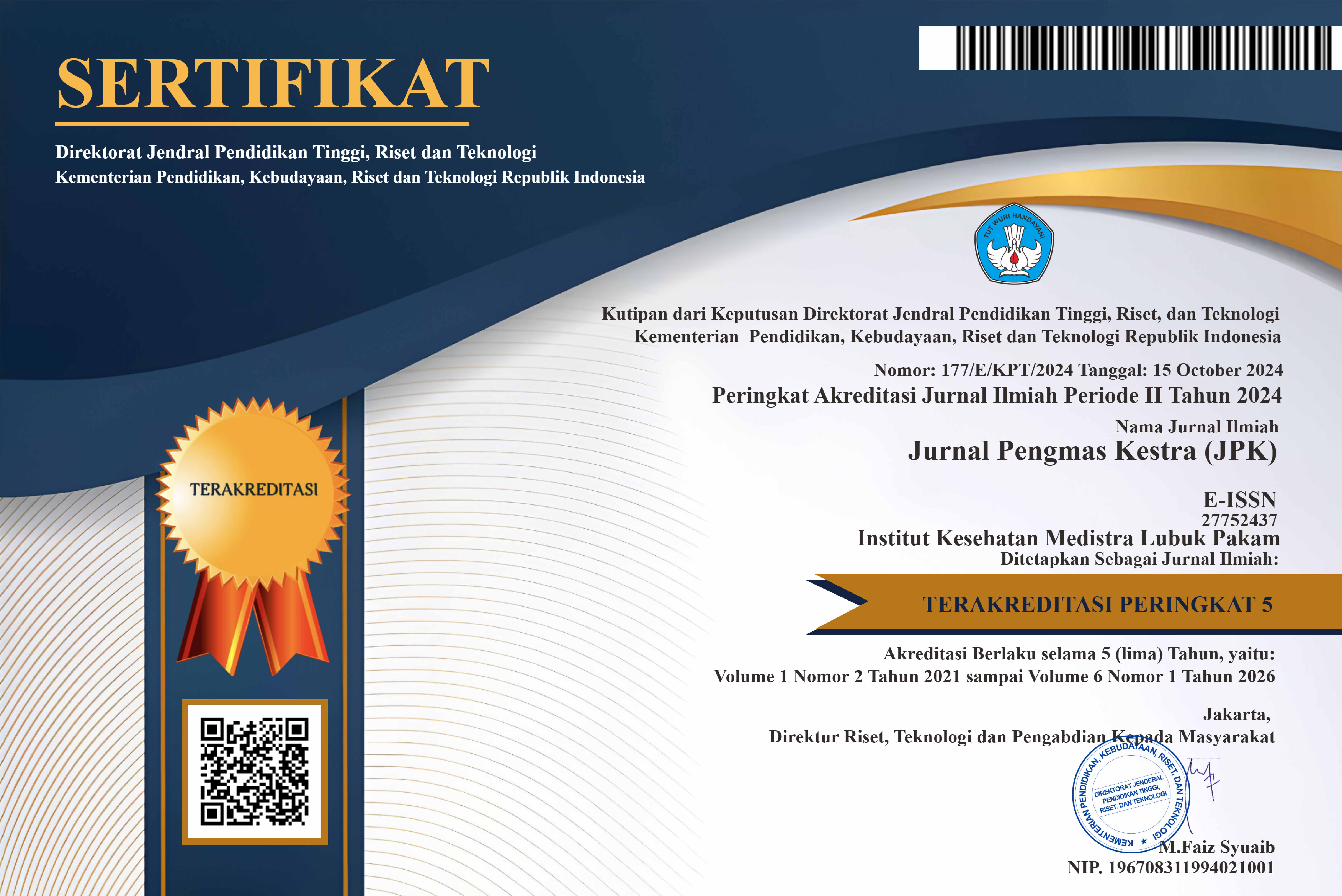Education on The Danger of Hydroquinone in Whitening Body Lotion Products in The Community
DOI:
https://doi.org/10.35451/jpk.v4i1.2203Keywords:
Dangers of Hydroquinone, Education, Product, Whitening Body LotionAbstract
White and bright skin is considered a symbol of beauty, success, and social status, especially in several Asian countries. This is the basis for feeling the need to care for skin, especially women. One way to care for your skin is by using whitening body lotion products so that it will produce an attractive appearance, where white and bright skin is the indicator. Finally, many women compete to use instant whitening products at low prices, but forget about the impact. Hydroquinone is an organic compound with an aromatic group that is usually added to some skin-whitening products. However, you need to pay attention to the levels and duration of use, because it can cause skin irritation and trigger cancer because it is a carcinogen. The hydroquinone level in the product is a maximum of 0.02%. This educational activity is carried out by combining methods, namely lectures, questions and answers, and discussions. PkM participants are 25 people from Lubuk Pakam. The PkM team also carried out pre and post-test activities to measure the level of knowledge of PkM participants after being given education. The PkM results provide new insight for PkM participants that some whitening products contain hydroquinone compounds at levels that exceed the limit, so PkM participants must know about the dangers of hydroquinone and how to choose safe whitening products. After being given education, PkM participants have experienced an increase in knowledge where the participants' post-test average score was 80,2 whereas the previous pre-test average score was 55,7.
References
Adriani, A., dan Safira, R. (2018). Analisa Hidrokuinon dalam Krim Dokter secara Spektrofotometri UV-Vis. Lantanida Journal.
Ari S.C, Eva S.S, Rani D.P. 2019. Analisis Merkuri dan Hidrokuinon pada Krim Pemutih yang Beredar di Jayapura. Journal Vol.8 No.1 P-ISSN: 2303-3142, Program Studi Farmasi,Universitas Cendrawasih, Papua.
Elferjani, H.S, Ahmida, N.H.S, and Ahmida, A. 2017. Determination of hydroquinone in some pharmaceutical and cosmetic preparation by spectrophotometric method, International Journal of Science and Research (IJSR), 6(7): 2219-2224.
Feladita, N., Saputri, G. A. R., & Puspita, L. (2016). Identifikasi dan Penetapan Kadar Hidrokuinon dalam Krim Malam pada Empat Klinik Kecantikan di Bandar Lampung dengan Menggunakan Metode Kromatografi Lapis Tipis dan Spektrofotometri UV-Vis. Jurnal Analis Farmasi, 1(3), 135-143.
Irnawati, Sahumena, M.H., dan Dewi, W. O., 2016, Analisis Hidrokuinon pada Krim Pemutih Wajah dengan Menggunakan Spektrofotometri UV-Vis. Jurnal Ilmiah Farmasi UNSRAT: Pharmacon.
Pamungkas. (2016). Perancangan VIdeo Iklan " Natural Honey Hand And Body Lotion" Bagi Wanita Indonesia. J Desain Komus Vis.
Rubiyanti, R., & Setiwan,A (2018). Pengaruh Pemberian Hidrokuinon Terhadap Fetus Mencit (Mus musculus L) Swiss webster. Jurnal Akademika Baiturrahim Jambi, 5 (1), 1-13. JOUR.
Sinurat, JP., Husna M., Br Karo RM., Syarifuddin A. 2024. Analysis of Hydroquinone Compounds in Whitening Body Lotion Preparations Circulating in The Community. Jurnal Kesmas dan Gizi (JKG). Vol. 6 No. 2.
Siyaka,L; Joda, AE; Yesufu, HB; Akinleye, MO; 2016, Determination of hydroquinone content in skinlightening creams in Lagos, Nigeria,The Pharma Innovation Journal.
Windiyati dan Mayasari T. 2019. Perawatan Kecantikan Kulit, Panduan Lengkap Perawatan Estetika Kulit Wajah. PT. Gramedia Pustaka Utama; Jakarta.
Downloads
Published
Issue
Section
License
Copyright (c) 2024 Jhon Patar Sinurat, Reh Malem Br Karo, Miftahul Husna, Aminah Syarifuddin

This work is licensed under a Creative Commons Attribution 4.0 International License.
Copyright in each article is the property of the Author.




















